Tangy Brussels Sprouts
Brussels sprouts are one of my favorite vegetables, and I love coming up with creative ways to prepare them for my family. They taste wonderful when shredded raw in a salad, roasted, grilled, sautéed — pretty much in every which way, except for when they’re overcooked! When prepared properly, brussels sprouts take on incredible flavors without you having to do much to them. For me, the perfect brussels sprout is slightly charred and crispy on the outside and caramelized and tender on the inside. Brussels sprouts look like baby cabbages but honestly taste like vegetable candy! Those charred, crispy outer leaves can be super-addicting when they fall off the sprout in the baking pan!
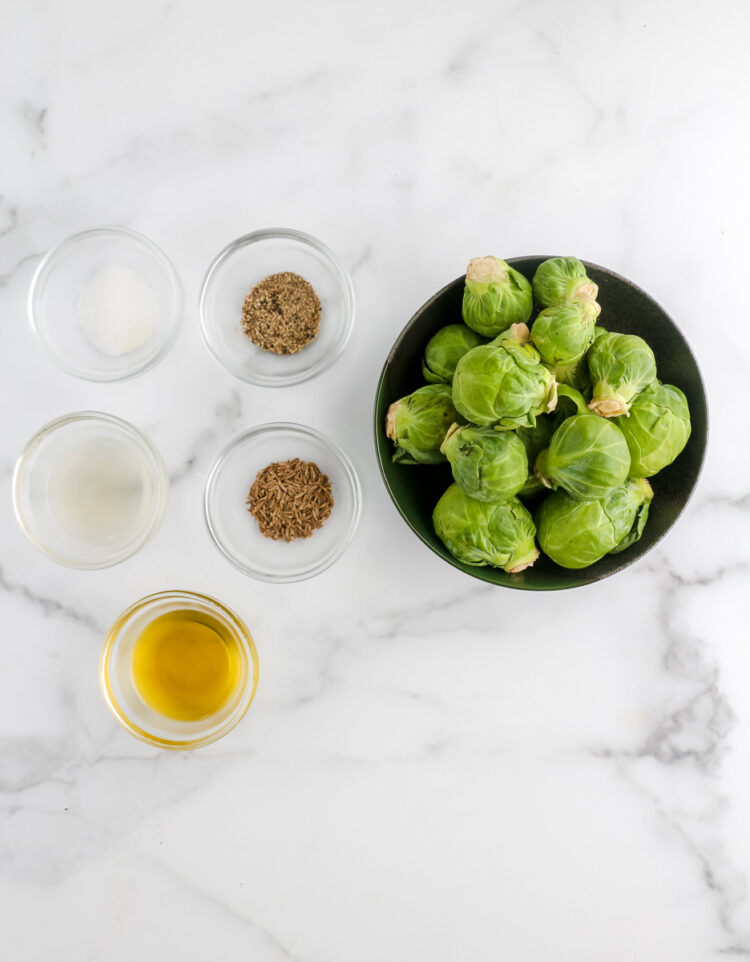
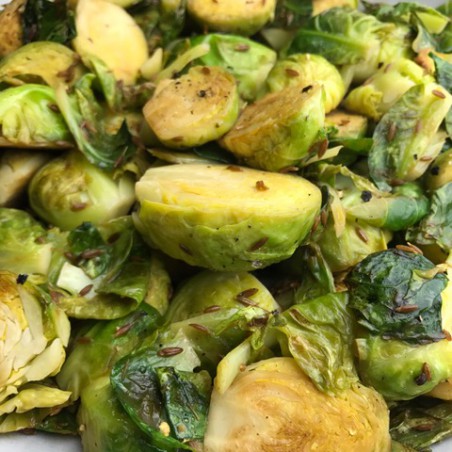
Ingredients
- 1 pound brussels sprouts, (trimmed, halved)
- 1 tablespoon olive oil
- 1 teaspoon cumin seeds
- 1 teaspoon lemon juice
- Salt and pepper, (to taste)
Instructions
- Boil a large pot of water and drop the sprouts into the boiling water, making sure they’re covered completely. Boil them for 2-3 minutes and prepare a bowl of ice water while you wait.
- Remove the sprouts using a slotted spoon and drop them into the ice water to halt the cooking process. Drain the sprouts and set them aside.
- Heat the olive oil in a saucepan and add the cumin seeds, letting them crackle.
- Add the blanched sprouts and cover the pan, then cook for 5 minutes, shaking the pan occasionally.
- Turn off the heat and season the sprouts with lemon juice, salt, and pepper.
Bon appétit!
Pro Tips: To make this dish ahead of time, blanch the Brussels sprouts and store them in an airtight container for up to 2 days (they tend to spoil quickly so I wouldn’t make them too far ahead!) then stir-fry them on the day of making this dish.
HOW TO TRIM BRUSSELS SPROUTS
No matter the size of your brussels sprouts, I recommend cutting off the tough stem at the end (a.k.a. the core that holds the leaves together). Some of the outer leaves will fall off and you can reserve the green ones to roast or sauté along with the sprouts — they become super-crispy and delicious. I like to use them as a garnish for soups or even munch on them as a healthy snack! (Note that you can either leave the sprouts whole or cut them in quarters or halves.)
Sometimes brussels sprouts can be unexpectedly buggy — yuck! — which is something you’d only find out once you already buy them and start trimming them. If this is the case, place the sprouts in a bowl filled with warm water and let them soak for about 10 minutes to flush out the dirt and any lurking pests. Then try not to think about it ever again!
HOW DO YOU TAKE THE BITTERNESS OUT OF BRUSSELS SPROUTS?
The bitterness of brussels sprouts makes them a little less popular than other vegetables, but with the proper cooking techniques, you can reduce the bitter flavor and make them super delicious!
- Cut them in half: The bitter taste of brussels sprouts comes from compounds called glucosinolates, which are concentrated in the center of the sprouts. It helps to halve the sprouts so that these compounds are released during the cooking process.
- Do a quick blanch: I try not to boil any vegetables for too long as it results in water-soluble vitamins leaking out into the water and reducing the nutritional benefits. A quick blanch for 2-3 minutes, depending on the size of your sprouts, should thoroughly diminish the bitter flavor.
- Roast or sauté: The natural caramelization that occurs with these cooking techniques makes the sprouts sweeter and thus less bitter tasting.
- Add fat: Balance the bitter with fat such as oil or vegan butter. If you have something bitter and you match it with something fat, they play off each other and make each other taste even better because fat coats the mouth and makes the bitter flavor less noticeable.
- Add plenty of flavors: Combat bitterness with a sprinkle of salt and pepper. Other flavor options that pair well with brussels sprouts include mustard, balsamic vinegar, sautéed onions or shallots, chopped and toasted nuts, miso, and maple syrup. Try my Maple-Roasted Brussels Sprouts for the perfect combination of sweet and savory flavors!
HOW DO YOU KEEP BRUSSELS SPROUTS FROM GETTING MUSHY?
If you ever went through a period where you absolutely detested brussels sprouts, you may have been cooking them all wrong! When boiled for extended periods, brussels sprouts become mushy and start to take on a smell due to natural gases being released from the application of heat. For this recipe, a quick blanch (2-3 minutes) in boiling water ensures that the sprouts soften up at their core (so no smell!), and then we let the frying pan take care of the crispy outer layer (no mush!).
Another delicious way to prepare brussels sprouts is by tossing them in some oil and salt and then putting them in the oven to roast at 400 degrees F (high heat = crispier outer shell). The outside will caramelize and give them a sweet note while their texture softens but remains tender. In contrast, if you let your sprouts get too dry by not using enough oil, the sprouts won’t brown and soften, they’ll just dehydrate and firm up.
HOW LONG SHOULD YOU COOK SPROUTS?
If you’re roasting your brussels sprouts and you see the outer shell getting dark, looking almost a little bit burnt, then you’ve done it right. Roast the brussels sprouts until they’re deeply golden on the flat sides and easily pierced with a fork. This process usually takes 30-40 minutes in the oven if they’re particularly large, or 20-25 minutes for smaller sprouts.
In this recipe, the quick blanch also brings out the bright green color of brussels sprouts in addition to softening them up on the inside and reducing some of the bitter flavors. Then we sauté them in a frying pan for just 5 minutes to crisp up the exterior.
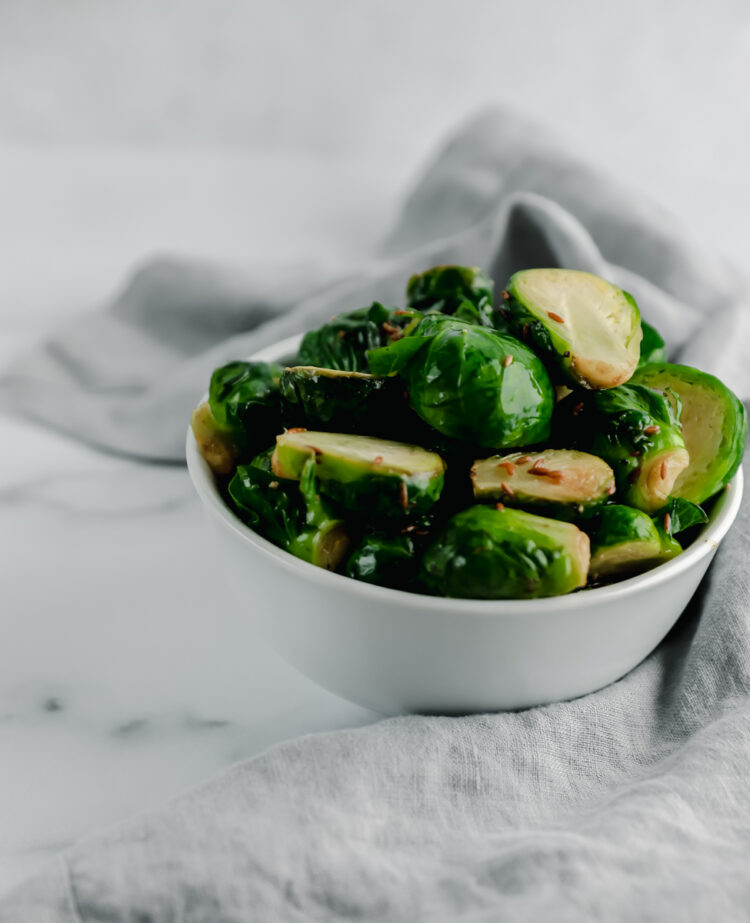
INGREDIENTS FOR TANGY BRUSSELS SPROUTS:
- Brussels Sprouts: These cruciferous sprouts are high in vitamins C and K, antioxidants, fiber, and plant protein. Brussels sprouts can be somewhat bitter when consumed raw, but they take on a nutty and sweet taste when cooked properly. Look for brussels that are similar in size, and keep in mind that larger brussels should be halved or quartered before cooking. (Because they’re somewhat dense, this will allow the inside and outside to cook at the same rate.) Smaller brussels can be cooked whole, but if they’re cut in half just roast them with the cut side down to get the perfect caramelization effect. Smaller sprouts tend to taste sweeter, while larger sprouts taste more cabbage-like.
- Cumin Seeds: I use these earthy seeds to add an Indian flair to the dish.
- Lemon Juice: You may have heard of balsamic-roasted brussels sprouts, which is a fairly common side dish served at restaurants, but they do well with other acids such as lemon juice and apple cider vinegar. Just a touch will brighten their flavor.
- Olive Oil: I usually use extra-virgin olive oil (EVOO) for light sautéing because I love the peppery flavor. You can experiment with other oils such as unrefined coconut oil for a subtly sweet coconut taste or peanut oil for a nutty flavor. Vegan butter is another great option — feel free to use more than one tablespoon to ensure that the sprouts caramelize in the pan properly.
- Salt & Pepper: Season the sprouts at the end of cooking to bring out their flavor. I like to use kosher salt and freshly ground black pepper.
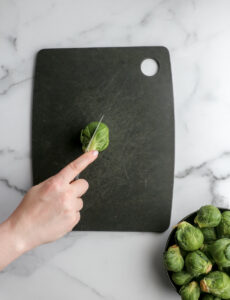
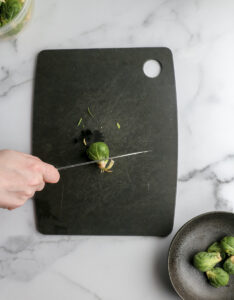
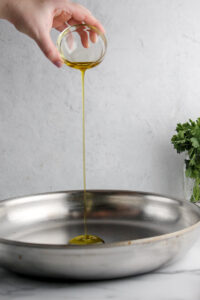
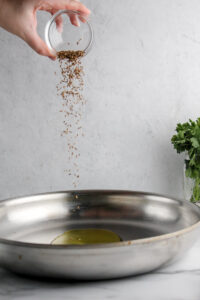
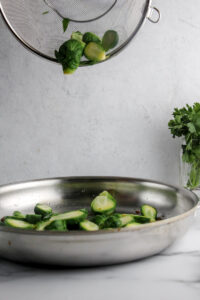
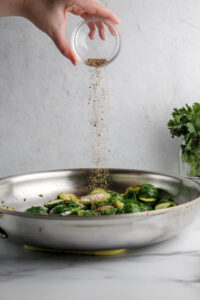
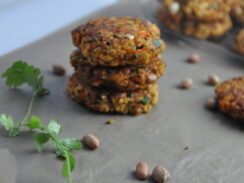
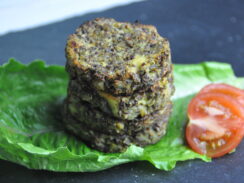
VEGAN BRUSSELS SPROUT SALAD WITH ROASTED SQUASH RECIPE - Veggiecurean
[…] nuts, miso, dried cranberries, and lemon juice all pair really well with Brussels sprouts. Try my Tangy Brussels Sprouts for a healthy side with a little […]